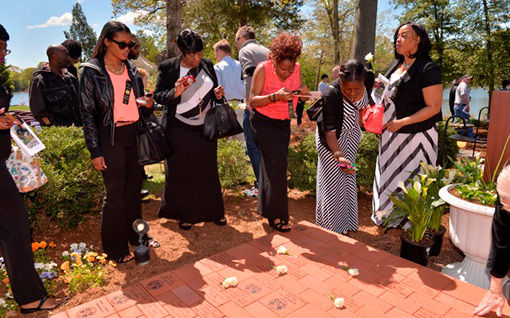
There was a bite of anger Oct. 2 in the normally placid officialese of the U.S. 7th District Court of Appeals ruling. “We can’t exclude the possibility that the company’s unexplained, unjustified refusal of access to (the investigator) was intended not only to prevent the union from investigating safety issues and perhaps discovering negligence by Caterpillar,” wrote veteran judge, author, and wordsmith Richard Posner, “but also to demonstrate to its employees that the union can do nothing to enhance their safety.”
With that, Posner, speaking for the appeals panel, compelled Caterpillar – four years into a fatality case kept alive by the United Steel Workers – to finally let in the union’s specialized safety investigator.
Yes, the death on the job took place four years ago – Sept. 8, 2011 – on the floor of the enormous Bucyrus plant in South Milwaukee before horrified co-workers and has never been fully explained though Milwaukee County has exceptional procedures to investigate workplace deaths.
This was shortly after Caterpillar bought the most successful mining company in the world, Bucyrus (Joy Global, the second most successful, is also from Milwaukee and uses the expertise of the United Steelworkers), hoping to expand international profits and its 114,000 workforce by acquiring a world-respected brand for mammoth mining equipment.
Jeffrey Smith, 30, an experienced and popular young worker and part-time local bar musician from Kenosha, Wis., was attaching a chain under one of the gigantic Crawlers assembled at the plant (imagine an Army tank weighing 36 tons) when a crane above went horribly wrong and he was crushed to death before other workers could reach him.
County DA John Chisholm remembers that day well. He sent a criminal investigator who considered it an accident but lacked the safety expertise to say just what caused it. OSHA poked around and found several general violations to slightly fine the company. But when the USW, following protocol, invited an expert safety investigator from its national emergency response team, Caterpillar blocked entry.
The conglomerate instead offered clumsy video re-enactions of the incident even as Smith became part of the AFL-CIO’s sad yearly Workers Memorial Day list of the hundreds who die on the job and deserve answers for the families and efforts at righting safety wrongs. The company also refused a National Labor Relations Board order to let the inspector in.
As Posner wrote in the court’s decision: “Nothing in Caterpillar’s videos so much as hint at a reason. To say that they depict a re-enactment of the accident is absurd. Given the absence of text and sound it is impossible to understand what, relative to the accident, the videos demonstrate.” In effect, Posner wrote, there’s “no clue to a possible cause” adding “a union has a compelling interest in site access, and therefore the company faces a high hurdle in trying to demonstrate that its property interests outweigh the union’s need.”
Several prosecutors also reminded me after the Posner ruling that nothing raises suspicions in their minds more “than a company resisting specially-trained investigators at a workplace incident.” The appeals court extended its decision to warn Caterpillar not “to continue to deny the union access to future accident sites.”
Caterpillar is a gigantic manufacturing conglomerate with a troubled history on how it negotiates with the Steelworkers and other unions and has absorbed major fines from OSHA over injuries and deaths at many work sites. In 2010, citing the quality of mining equipment and putting its USW staff front and center as the heart and voice of the company, Bucyrus reported $3.65 billion in yearly profits, which led Caterpillar to lay out a whopping $7.6 billion to acquire it after first trying to compete.
But Caterpillar had not anticipated the massive downturn in global demand for new ore and equipment. (Part of that, insiders tell me, is that international companies know the colossus equipment made by Bucyrus and Joy Global is durable so they are delaying replacements – a backhanded compliment to American union quality.)
So while all the worries about what killed Smith were going on within the workforce, the mining business not only swooned but Caterpillar responded with massive layoffs, reducing the 800 it inherited to some 250 left at present in USW Local 1343. (The sad story of a Midwest union success vaporized under Caterpillar was detailed in a 2013 report.)
Oct. 6 I interviewed Ross Winklbauer, sub-district director of USW southeastern Wisconsin operations, catching him just as he was writing a letter to Caterpillar management setting up the details of the court authorized investigation. (Caterpillar responded to the court ruling with “disappointment” but said it would comply.) He and Local 1343 leader Brad Dorff anticipate that even four years later the emergency rapid response team will be able to reconstruct the accident since several witnesses are either at the plant or are willing to share “vivid memories,” said Winklbauer.
There were two reasons USW doggedly stuck with the case through four years of delay. “One was simply that the company never said what happened and we wanted to go in with fresh eyes,” he said.
“But the other reason is we think the company resisted because they wanted to tell the workers the union can’t do a damn thing for you.”
If you sense a bite in Posner’s ruling, remember the real bulldog here was the USW.
Photo: According to the AFL-CIO, more than 150 workers are killed on the job every day. Family and friends of International Association of Machinists and Aerospace Workers members who died from work-related injuries attend a service on Workers’ Memorial Day in Maryland. | IAM










